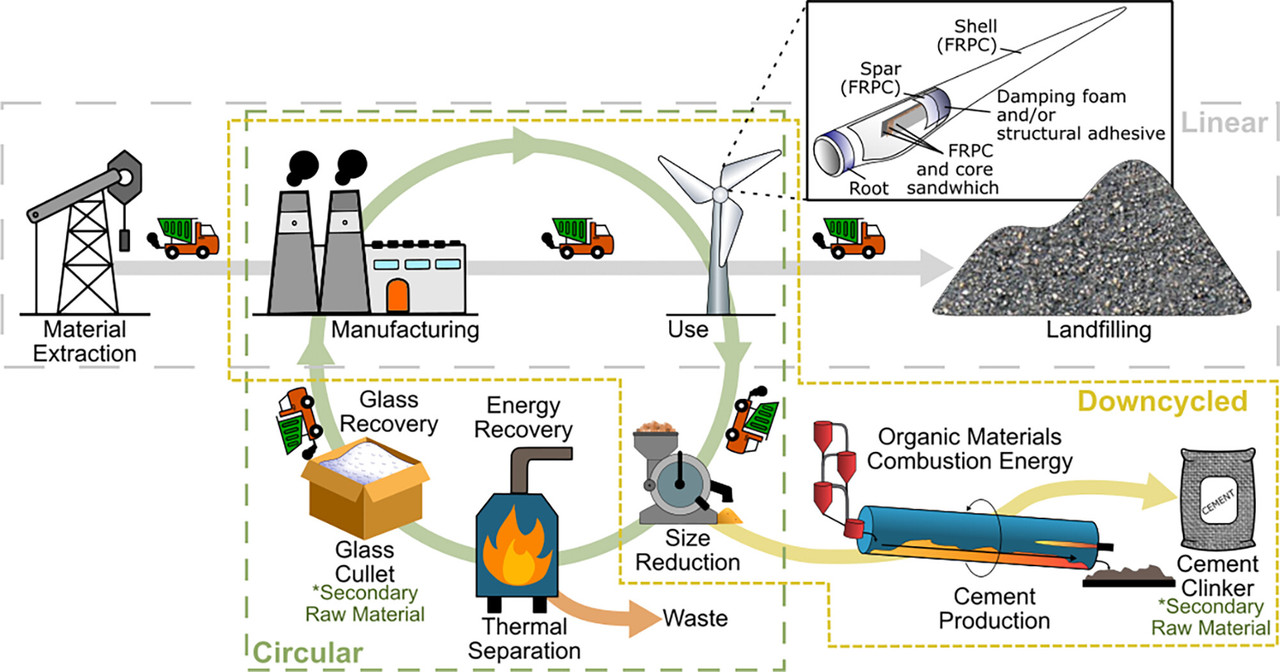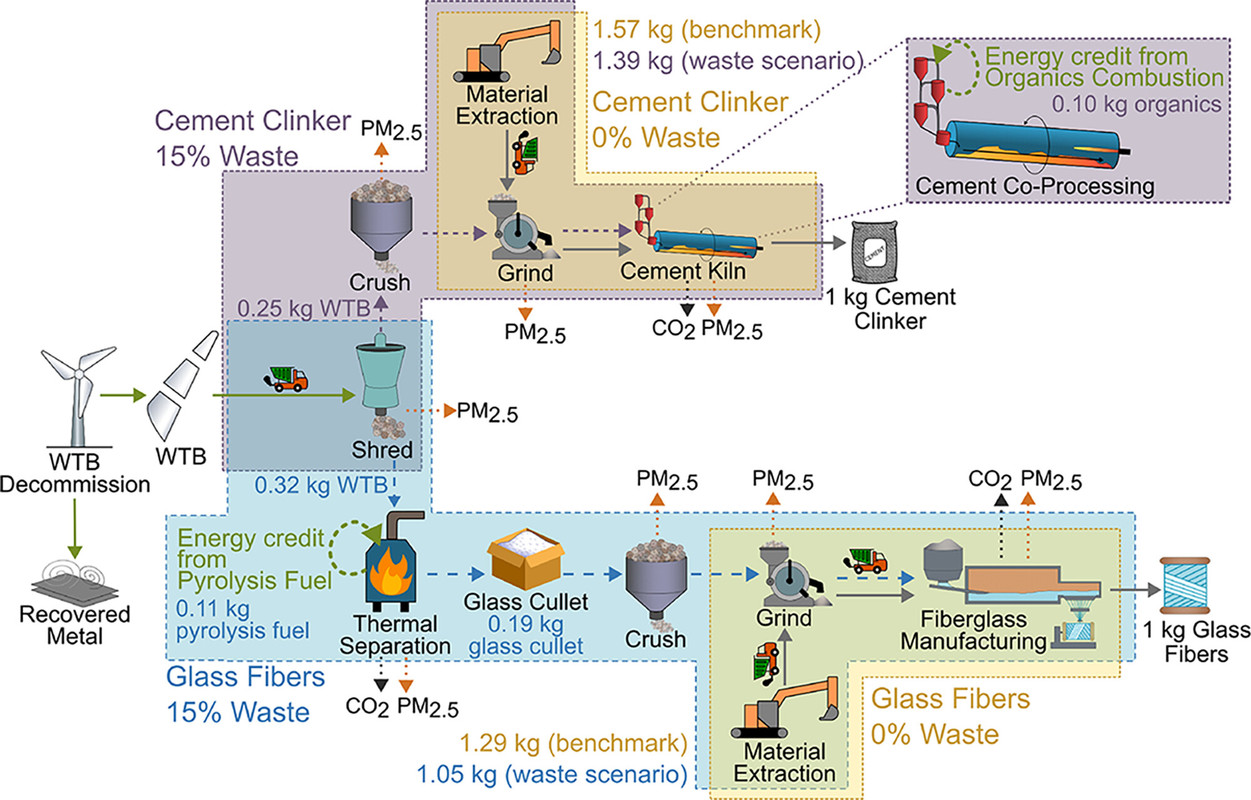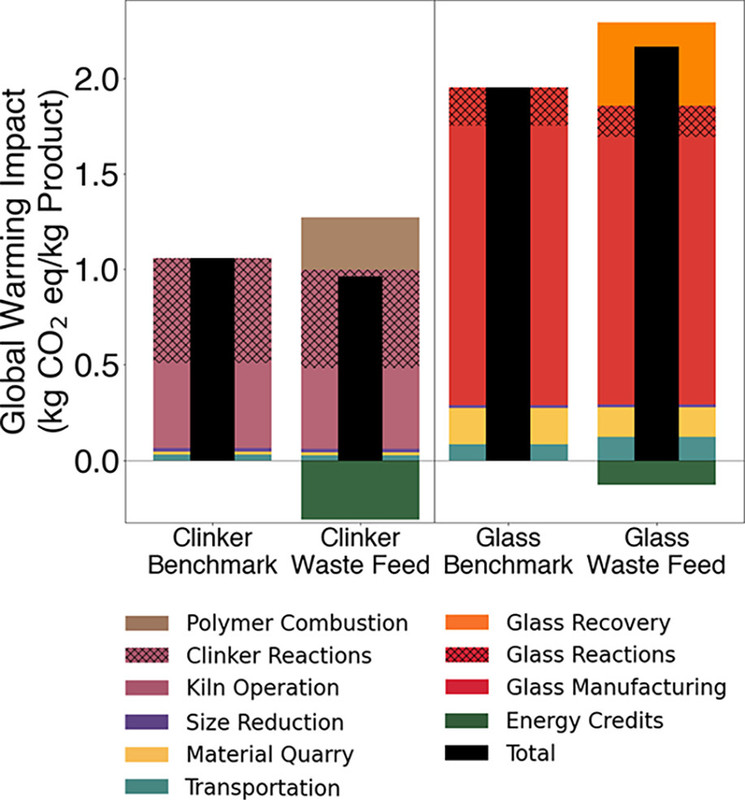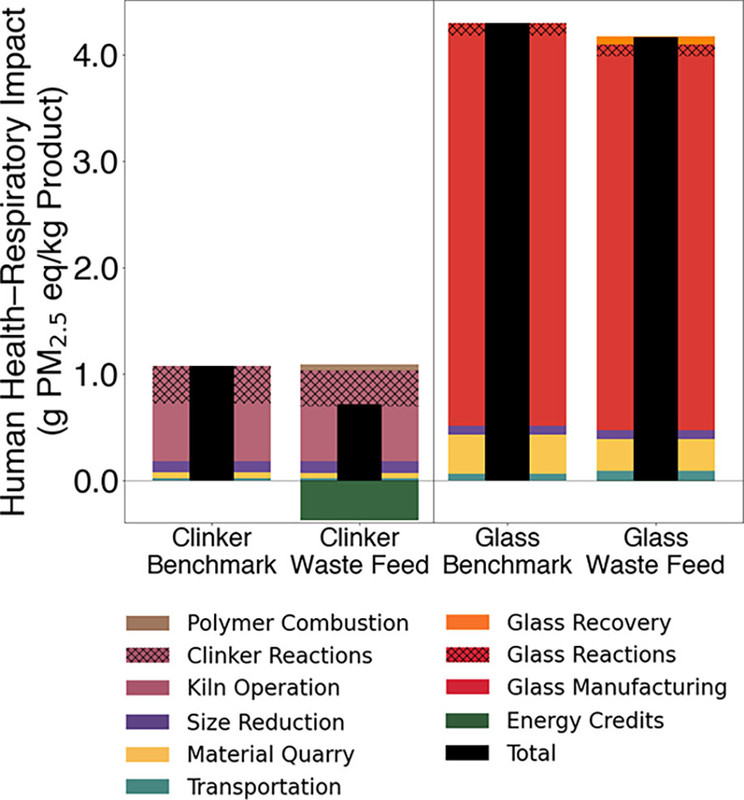Life Cycle Analysis, Carbon and Health Risks of Wind Turbine Blade Waste. [View all]
The paper to which I'll refer in this brief post is this one: Life Cycle Assessment to Quantify Global Warming and Human Health–Respiratory Impacts of Using Composites from Waste Wind Turbine Blades as Feedstock for Cement Clinker and Fiberglass Production Caroline V. Cameron, Sabrina Spatari, Jason B. Baxter, and Megan A. Creighton Environmental Science & Technology 2025 59 (40), 21476-21485.
I frequently remark that so called "renewable energy" has, a multitrillion dollar cost has done nothing, zero, zilch, nada to do anything about the collapse of the planetary atmosphere other than to lead to its acceleration. I question whether the fad is either sustainable or, despite its rote popular designation as such, "green."
Hard truths are, just that, truths in spite of being hard.
The paper referenced above is open to the public for use; anyone can read it, but it refers to the waste problem associated with wind energy and offers some potential solutions, all of which involve the use of precisely the type of energy the wind industry does not produce, heat.
Some excerpts nonetheless:
Wind energy accounted for 6.7% of global electricity in 2021, (1,2) and installations are projected to double in the coming years. (3) However, growth in this sector also generates an increasing stream of solid waste as the wind turbine blades (WTBs) are decommissioned after approximately 20 years of service life. A global total of 13–43 million tonnes (t) of decommissioned blade material is expected by 2050. (4−6) These blades are made of about 85% fiber reinforced polymer composites (FRPC) by mass, with smaller quantities of foams, adhesives, and wood (7−9) (see inset in Figure 1 outlined in black). 65–90% of FRPC in the wind industry exclusively uses glass fibers; the balance are a hybrid that include carbon FRPC in specific segments of the blade to increase strength and reduce weight, enabling longer blades and higher power turbines. (10,11) Glass FRPC comprises a thermoset epoxy matrix (11,12) and either borosilicate glass called E-glass or a boron-free variation with improved chemical resistance and mechanical properties known as E-CR glass. (13,14) These glasses are low in cost, high in strength and stiffness, and provide chemical resistance. (14,15) Recent efforts to design for recycling focus on thermoplastic resin systems, (16,17) alternate thermoset chemistries with dynamic covalent bonds, (18) or carbon fiber composites. (19−21) These emerging material technologies represent significant advances for the future of waste recovery. (6,12,22,23) However, most blades that will be decommissioned in the next few decades will be made from epoxy-glass composites, and technical solutions to address this growing solid waste stream are needed...
Note the 20 year figure for lifetime. I hear all the time from people in denial about this figure, nonetheless, one can show that a 20 year lifetime for wind turbines is a
generous assumption, meaning that "by 2050" pretty much every wind turbine now operating will need replacement.
The accumulation of wind turbine blades by mid century will be in the tens of millions of tons.
Figures from the text:

The caption:
Figure 1. Life cycle stages of linear (gray), downcycled (yellow), and circular (green) life cycles. The downcycled and circular life cycles produce secondary raw materials cement clinker and glass cullet, respectively. The inset figure shows the structure, components, and materials commonly found in a wind turbine blade.

The caption:
Figure 2. System boundaries for the process steps to produce cement clinker and fiberglass using only virgin raw materials (yellow) or a mixture of virgin and waste-derived materials (purple/teal).

The caption:
Figure 3. Global warming impacts for cement clinker and fiberglass production with and without waste WTB feedstock. Impacts are shown as relating to transportation (teal), material quarrying and extraction (yellow), size reduction (purple), kiln operation (mauve), polymer combustion (brown), pyrolysis (orange), glass manufacture (red), and energy credits (green). The black bars indicate net totals of all inputs, outputs, and credits.

The caption:
Figure 4. Human health–respiratory impacts for cement clinker and fiberglass production with and without waste WTB feedstock. Impacts are shown as relating to transportation (teal), material quarrying and extraction (yellow), size reduction (purple), kiln operation (mauve), polymer combustion (brown), pyrolysis (orange), glass manufacture (red), and energy credits (green). The black bars indicate net totals of all inputs, outputs, and credits.
Note the use of furnaces and heat. I have argued that because of its unreliability so called "renewable energy" relies on the use of dangerous fossil fuels. The requirement for
heat for a putative recycling approach proposed here (but not practiced anywhere) suggests the same. Whence the heat? From strip mining forests for wood in order to be "green?"
Get real.
One should note the PM
2.5 impacts on human health, or maybe one should wave one's hand and mutter something about Fukushima or some such thing.
The purpose of the "renewable energy" fantasy is not now, and never was, nor will it ever be, about addressing the use of fossil fuels. On the contrary, allegedly "renewable" energy depends on access to fossil fuels. The purpose of the fantasy was to attack the only sustainable form of primary energy there is, nuclear energy. That was true in the past and is true now. This represents the only pyrrhic "success" of so called "renewable energy." It is too late now for nuclear energy to do what it might have done.
We deserve what we're getting.
History will not forgive us, nor should it.
Have a pleasant day tomorrow.



